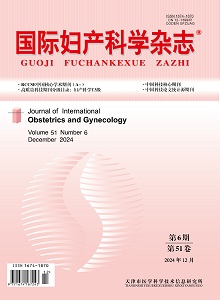Objective: To analyze the incidence and mortality of cervical cancer in China from 1992 to 2021, and to explore the effects of age, period, and cohort factors on these trends. Methods: Using the Global Burden of Disease (GBD) 2021 database, we analysed cervical cancer incidence and mortality from 1992 to 2021, employing Joinpoint software to assess the time trends of age-standardized incidence and mortality rates. An age-period-cohort model was constructed to analyse the influence of age, period, and birth cohort on the trends of incidence and mortality trends. Results: In 2021, the incidence rate of cervical cancer in China was 19.12 /100 000, and the mortality rate was 7.18 /100 000, representing increases of 91.58% and 33.46% respectively since 1992. From 1992 to 2021, the age-standardized incidence showed a rising trend, averaging an increase of 0.70% per year, while the age-standardized mortality rate exhibited a declining trend, averaging a decrease of 1.20% per year, with statistical significance (both P<0.05). The age effect indicated that from 1992 to 2021, incidence rates increased among women aged 15 to 59 years old, while showing a fluctuating decreasing trend after age 60 years old; mortality rates increased with age. The period effect revealed a rising risk of incidence from 1992 to 2021, with the highest risk observed from 2017 to 2021 (RR=1.06); the risk of death showed a decreasing trend, peaking from 1992 to 1996 (RR=1.07). The cohort effect demonstrated that those born later had higher incidence risks but lower mortality risks. Conclusions: From 1992 to 2021, the age-standardized incidence of cervical cancer has risen, but due to advancements in medical treatment, the mortality rate has decreased. The incidence is higher among middle-aged women, while mortality increases in older populations. Individuals born later have higher incidence risks, highlighting the need for ongoing improvements in prevention and health education to address the public health challenge posed by cervical cancer in China.

